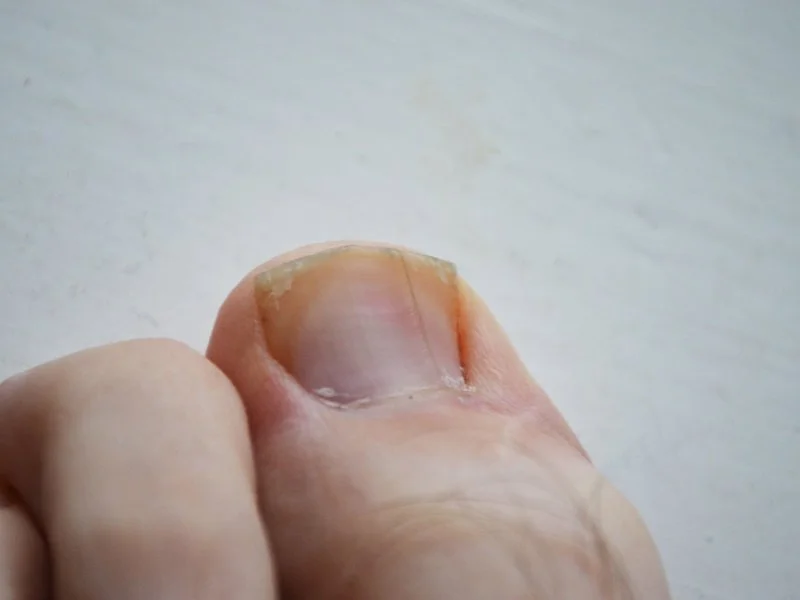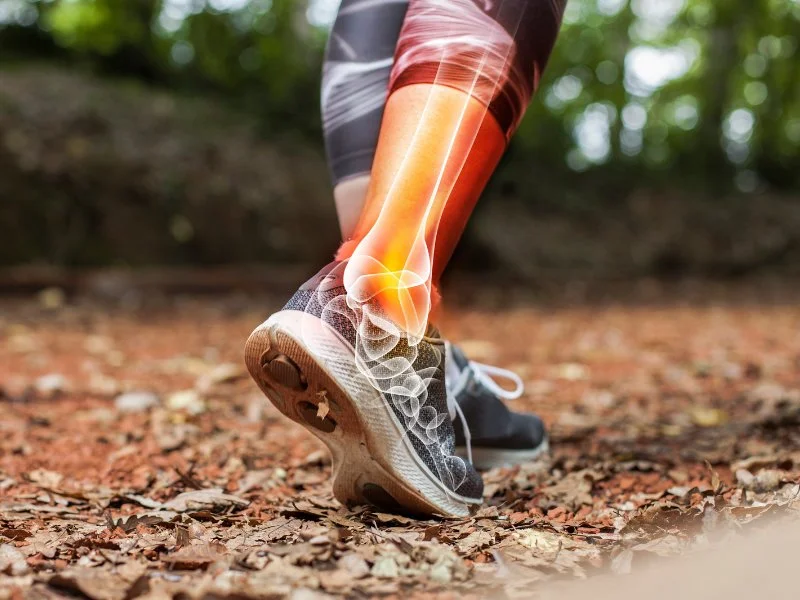Claire specialises in elective surgery and has particular expertise in bunion correction, digital correction and other forefoot conditions. She has over twenty years experience in effectively treating a wide range of conditions.
Bunions - Hallux Abducto Valgus (HAV)
Bunions are a complex, painful and often progressive deformity. They often run in families and can cause problems with shoe fitting and activity due to pain. Quite often this can be managed with footwear adaptations, insoles and pads. When these methods are not successful, corrective surgery can be considered. Surgical techniques have developed considerably over the last 30 years and there are several different procedures which can be used for effective correction. With information about your medical history, the nature of your foot problem, evidence from X rays and the clinical presentation, Claire will guide you to deciding on the most appropriate procedure.
Corns
Corns or heloma durum/molle are basically calluses on the feet which cause pain and discomfort. They can make life miserable with continual irritation from shoes and activity. An HCPC registered General Podiatirst can offer treatment to remove the corns, but they often reoccur due to structural deformity such as hammer toes or mechanical disfunction due to poor gait. Sometimes a simple excision of the skin with the corn included is sufficient to resolve this problem. However, in other times, structural correction of a deformity such as hammer toe is required to prevent reoccurance.
Frieberg’s Disease
This is a condition which can occur during teenage years, as a result of interrupted blood flow to the head of a metatarsal bone. It affects the 2nd toe with pain swelling and thickening of the joint at the base of the 2nd toe. It can occur later in life as a result of a direct trauma or mechanical overload of the joint due to poor foot mechanics. Treatments include: padding, insoles, steroid injection or surgery. Depending on the severity of the symptoms and the X ray findings, when surgery is an option it may involve reduction of the bone, cartilage implant or shortening/elevating the metatarsal head.
Hallux Rigidus
This condition is the result of osteoarthritic changes within the big toe joint. The result is a painful, stiff, enlarged big toe joint. It can make walking and footwear choices problematic. Treatment choices include footwear adaptations, insoles, steroid injections and surgery. Surgical choices will depend on the severity of the condition and realistic objectives. A range of procedures from remodelling the shape of the joint, joint replacement, cartilage replacement or fusion of the joint can be considered.
Heel Pain
Not all heel pain is plantar fasciitis although this condition is very common. A full assessment is required to make a diagnosis. Heel pain may be the result of a fracture, bone tumour or calcification of soft tissue attachments. It could also be caused by nerve entrapment, plantar fascia scaring or mechanical disfunction caused by tight calf muscles. Skin problems such as corns, verruca or psoriatic plaques can present as heel pain. Often there is a combination of problems leading to the pain, so treatment must address all of the issues in order to be successful.
Ingrowing Toenail
A common but very painful condition, where a spike of nail at the side of the nail plate pierces the soft tissue causing an infection. This can then lead to swelling and over granulation of the tissue. Incisional nail surgery, partial or total nail avulsion with chemical cautery are options for treatment.
‘Lumps and Bumps’
This covers a multitude of soft tissue conditions including cysts, ganglions and gout deposits. If conservative care has not been successful, then surgical excision of the tissue may offer relief of symptoms and return to normal footwear and function.
Toe Deformaties
Any unusual position of the toes can cause painful rubbing in shoes and inefficient mechanical function. Hammer, claw, retracted, rotated and misaligned toes often become increasing painful and can become swollen or infected. An X rays is often required to understand the deformity and inform treatment choices. These may include surgery to straighten the toes by removing small sections of bone or fusing the small joints. Occasionally removal of a toe or part of it a sensible option, but this will be discussed in detail.
Metatarsalgia
This is a generic term for pain across the ball of the foot. This pain is located across the meatarsophalangeal joints, where the base of the toes meet the end of the metatarsal bones. The cause of this pain can be a variety of pathologies. These can include: mechanical disfunction, structurual deformities such as Hallux Valgus (bunions) or toe deformities such as hammer toes, through to soft tissue problems such as neuroma, ganglion, tendonitis or plantar plate tears. A thorough history and examination should help to identify the cause of the pain and inform treatment options.
Neuroma
Neuroma refers to a thickening or scar tissue around a nerve. It is common to experience this between the 3rd and 4th metatarsals leading to burning, shooting pain and numbness into the 3rd and 4th toes. This can be a debilitating pain which interferes with normal activities. Treatment options include insoles and footwear modifications, guided steroid injections or surgery to remove the thickened nerve.
Osteoarthritis
Osteoarthritis is the wear and tear disease which can affect any joint in the body but is common in the joints of the feet. When it occurs in the big toe joint, this is referred to as Hallux Rigidus. Osteoarthritis in the foot joints often leads to hard bony lumps over the joints which can irritate the tendons and ligaments and make footwear uncomfortable. In more severe cases, pain across the joint surface makes activity and movement very uncomfortable. Treatment options include footwear adaptations, insoles or steroid injections. Surgical options are to remove the bony lumps or fusion of the joint, depending on how severe the arthritic changes are.
Plantar Plate Injury
The plantar plate is a soft tissue structure found underneath the toe joints in the ball of the foot. Its purpose is to stabilise the joint, aid in efficient walking function and prevent deformity of the toes. It can become damaged due to mechanical overload, which may occur when there is a bunion, or where there has been over-use, for instance from excessive running or a direct trauma like stubbing the toe. If this structure is torn or stretched, the joint becomes unstable and the toe often goes into a hammer position with pain in the ball of the foot. Sometimes this can settle down with taping and strapping but if this is inadequate, then surgical repair is an option.
Rheumatoid Arthritis
Rheumatoid arthritis is an inflammatory disease which effects the body in multiple ways. Often the small joints of the foot are affected with synovitis of the joints, destruction of the bones and deformity/malposition of the toes. These are complex problems and while medical management of the disease is paramount, surgery is often needed to optimise foot structure and facilitate mobility. Each person will present with a unique set of foot problems, so surgery is designed to manage the presenting deformity.
Revision of Failed Surgery
Sometimes a patient has already undergone foot surgery, but is not happy with the outcome. This is always a risk with any surgery. If there are still problems with the structure of the foot or with how it functions, Claire can review the foot and offer a range of options to improve the situation.
Sesamoid Pain
There are two small bones which form part of the big toe joint and these sit just under the first metatarsal. They are within the flexor tendon and function in a similar way to the knee cap (patella). These bones may become painful or enlarged for a number of reasons. For instance, if the big toe joint is misaligned as seen with a bunion (Hallux Valgus) deformity, or if there is Osteoarthritis in the joint or if there is poor function following injury. Treatment is often focused on mechanical off-loading of the joint or steroid injections. If this fails then surgical reduction or excision of the sesamoid may be required.
Sports Injuries
Anyone can suffer a sports injury. These can range from a stress fracture of the metatarsal from hiking, to an ankle ligament strain from jumping sports.
The range of possible foot injuries from sporting activities is very wide. Identifying the damaged structure within the 26 bones, 33 joints and 100+ ligaments and tendons takes expert knowledge of the anatomy and function of the foot. A clear diagnosis is essential before a treatment plan can be developed. This often involves diagnostic imaging such as X rays, Ultra sound or MRI. Non surgical treatment is always considered before surgical intervention.
Tendon Pain
Tendon pain can be the result of overuse, mechanical disfunction, osteoarthritis/exostosis or injury. Whatever the presenting symptoms, the cause of the pain needs to be addressed as well as managing the pain. Often diagnostic imaging such as X rays, ultra sound or MRI is required before treatment can be started.
Verrucae
A verruca is a skin virus. Children and people with reduced immune responses are prone to show the signs of verrucae and given time, the body will usually mount an immune response which kills the virus in much the same way as a common cold. However, if the verrucae are causing a lot of pain, it may be worth considering treatment. There are many different treatments for verrucae, but the truth is none of them are 100% successful. Claire offers dry needling or, in some cases, surgical excision of verrucae, as these treatments are the most reliable methods to eradicate the problem.
























